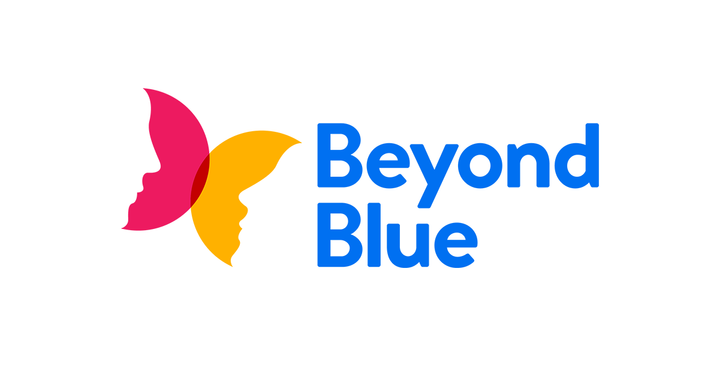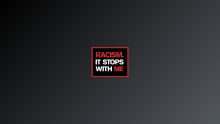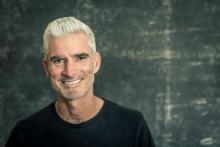Beyond Blue


Lorem ipsum dolor sit amet, consectetur adipiscing elit, sed do eiusmod tempor incididunt ut labore et dolore magna aliqua. Viverra orci sagittis eu volutpat odio facilisis mauris sit. Gravida arcu ac tortor dignissim convallis aenean et. Rhoncus est pellentesque elit ullamcorper dignissim. Eget duis at tellus at urna condimentum mattis pellentesque id. Turpis cursus in hac habitasse platea dictumst quisque. Nibh cras pulvinar mattis nunc sed blandit libero volutpat. Ullamcorper a lacus vestibulum sed arcu non odio euismod lacinia. Ultricies mi eget mauris pharetra. Nunc lobortis mattis aliquam faucibus purus in massa.
Suspendisse ultrices gravida dictum fusce ut placerat orci nulla. Molestie at elementum eu facilisis sed odio. Feugiat nisl pretium fusce id velit ut tortor pretium viverra. Vestibulum rhoncus est pellentesque elit ullamcorper dignissim cras tincidunt lobortis. Netus et malesuada fames ac turpis egestas sed tempus. Pharetra vel turpis nunc eget. Ullamcorper velit sed ullamcorper morbi tincidunt ornare. Suscipit tellus mauris a diam maecenas. Etiam erat velit scelerisque in dictum non. Feugiat vivamus at augue eget arcu. Hac habitasse platea dictumst vestibulum rhoncus est pellentesque. Hac habitasse platea dictumst vestibulum rhoncus est pellentesque elit. Facilisis magna etiam tempor orci eu lobortis elementum nibh.

Meet Craig
After a celebrated football career as captain of the Socceroo’s, Craig Foster turned his attention to the screen where he gained recognition as a three-time Logie winning sports broadcaster.
In 2019, Craig spearheaded a global lobbying campaign to free Bahraini-Australian footballer Hakeem al-Araibi from wrongful imprisonment abroad. Following Hakeem’s safe return home, Craig was personally thanked by the Prime Minister and became a finalist for the Human Rights Commission medal.
As an Amnesty International Human Rights Ambassador, Craig has led several high-profile campaigns including #GameOver which called for the release of over 400 refugees and people seeking asylum detained by the Australian Government.
Craig was part of a team of advocates who successfully secured the evacuation and resettlement of over 100 Afghans from Kabul in 2021, including the Afghan National Women’s Football Team, female TaeKwonDo athletes and a group of young Tajik girls who are the focus of the powerful film, ‘Die or Die Trying. Escaping the Taliban.’
Craig is an Adjunct Professor of Sport and Social Responsibility with Torrens University where he teaches sports industry figures how to utilise the sector for social justice and change. He is also a member of the Multicultural Council of Australia, an honorary appointment to the Member of the Order of Australia (AM) and finalist nomination for the NSW 2021 Australian of the Year.
What does ‘Racism It Stops with Me’ mean to Craig?
As a renowned athlete, media personality and white male in Australia, Craig Foster recognises his position of privilege.
For Craig, this comes with a responsibility to call out injustice and inequity.
“[Australians] have a responsibility to interrogate our own understanding, prejudices, and institutions in order to bring to life our cultural values of fairness and equality.”
Craig feels that this campaign is a tool to trigger important conversations and develop our collective understanding of racism, both at the individual and institutional level.
He acknowledges that anti-racism isn’t about one-off actions, but is a commitment to challenging the biases that are woven into the fabric of our society.

The Yorta Yorta man told the Courier Mail, “The only other guy out of the plane full of people that received the same treatment was another brown man… It is hard not to feel like it is something to do with colour especially when I get called out for a bomb test almost every time I go through airport security.”1
Take a closer look at a popular documentary show about Australia’s airport security and it’s possible to observe how racial bias shapes the treatment of travellers flying into the country. An analysis of over 108 episodes of reality TV show Border Security found that 73% of the passengers singled out for searches or interrogation on the show did not appear white, while 81% of border force officials did.2
Racial profiling by airport security (whether conscious or not) stigmatises targeted communities and reinforces racism in other contexts. In the recent report, Islamophobia in Australia III, Muslim respondents spoke about feeling discriminated against by airport security.3 At the same time, a 2019 study of Australian mainstream media found that falsely conflating Islam with terrorism was a common theme in racialised social commentary.4 These stereotypes are rearticulated through individual acts of racism, such as Islamophobic attacks online and in person where the perpetrator falsely accuses the victim of terrorism.5
What we witness in everyday settings – airports, for example – impacts our perceptions of race, and of people from different racial identities. If we want to live in a society where all people have access to rights, opportunities and justice, we need to ensure that First Nations people and those from culturally and linguistically diverse communities are no longer treated as a threat to public safety.
By reflecting on the impact of racism, and taking a stand against it, we can build a fair and equal society – for all.
Racism.
It stops with me.
1 ‘I was racially profiled: Coast artist’s airport nightmare’ Courier Mail (online, 21 July 2017) [9] <https://www.couriermail.com.au/news/queensland/sunshine-coast/i-was-racially-profiled-coast-artists-airport-nightmare/news-story/7a64d77af1c80d4470ef0e07ae131807>.
2 Ingrid Piller, Hannah Torsh and Laura Smith-Khan, ‘Securing the borders of English and Whiteness’ (2021) 0(0) Ethnicities 11.
3 Derya Iner, Islamophobia in Australia 2018-2019 (Report No 3, 2019) <https://researchoutput.csu.edu.au/ws/portalfiles/portal/208330970/Islamophobia_Report_3_2022_LR_Spreads_RA.pdf>.
4 All Together Now, Social commentary and racism in 2019 (Report, 2019) <https://alltogethernow.org.au/wp-content/uploads/2019/11/Social-Commentary-and-Racism-2019-1.pdf>.
5 Derya Iner, Islamophobia in Australia 2018-2019 (Report No 3, 2019) <https://researchoutput.csu.edu.au/ws/portalfiles/portal/208330970/Islamophobia_Report_3_2022_LR_Spreads_RA.pdf>.
Often, racial descriptors are used exclusively to refer to people from First Nations or culturally and linguistically diverse backgrounds, reinforcing the idea of whiteness as the norm.
Mentioning race isn’t always a bad thing. Culture can be a great source of pride and everyone is entitled to their racial identity. Mentioning race can also be important when discussing topics like power, justice and inequality. However, pointing out someone’s race when it isn’t relevant to the conversation can also have negative effects – both intended and unintended. Using racial descriptors when reporting on crime, for example, can perpetuate false stereotypes or ideas that there is a causal relationship between a person’s race and the crime they may have committed. Similarly, noting someone’s race when it isn’t relevant to the conversation can perpetuate the idea that they are an outsider, that they are ‘other’.
A study of the Australian media shows a revealing trend among media commentators, who use racial descriptors in articles that negatively discuss First Nations people and those from culturally and linguistically diverse communities at a level disproportionate to similar discussions about white people.1
It’s also important to recognise how racial descriptors can be used to treat people differently. In a recent ABC article, Mavis Tan shared her experience: ‘A lot of the time you go into shops and people say, “Oh, watch out for the Asian person by the door, keep an eye on her”, things like that’.2
Rethinking how we frame conversations and addressing our own biases is a crucial part of challenging racism.
By reflecting on the impact of racism, and taking a stand against it, we can build a fair and equal society – for all.
Racism.
It stops with me.
1 All Together Now, Social commentary and racism in 2019 (Report, 2019) <https://alltogethernow.org.au/wp-content/uploads/2019/11/Social-Commentary-and-Racism-2019-1.pdf>.
2 Mazoe Ford and Raveen Hunjan, ‘Racial discrimination in Australia: A third of young people report race-based mistreatment’, ABC News (online, 6 December 2016) <https://www.abc.net.au/news/2016-12-06/a-third-of-young-people-report-race-based-mistreatment/8092926>.
For example, while 32% of Australians have a first or second-generation background other than Anglo-Celtic, only 18% of the characters in television dramas do.1 In addition, this report found that 36% of programs had casts made up entirely of Anglo-Celtic characters. The vast majority of programs contained no main characters who identified as First Nations people.2
It's also important to consider the types of roles we typically see First Nations people and those from culturally and linguistically diverse communities cast in. Do we often see them in roles that perpetuate certain stereotypes? Do we see meaningful diversity that is empowering and intersecting, representing diverse genders and sexualities, ages and people with disabilities?
The news media landscape is no different. Australia lags behind the United States and the UK in terms of cultural diversity in the news media.3 We know the importance of media diversity in ensuring that the interests of society are broadly represented, and yet, the Australian media landscape fails to reflect the diversity we see in our communities. A 2020 study of Australian newsrooms found that 75% of presenters, commentators and reporters had an Anglo-Celtic background, while the majority of people from a culturally or linguistically diverse communities were found to believe that their cultural background is a barrier to career progression.4 The study also found that 100% of free-to-air television national news directors in Australia were white men.5
For Australian screens to genuinely reflect the diversity of our communities, we need to see cultural diversity reflected both in front of and behind the camera. It’s not only important that we see a diversity of talent on screen, but also that First Nations people and people from culturally and linguistically diverse communities are engaged as writers, producers, directors, and in management roles within media organisations. We need to ensure that these communities have a share in telling the stories that we see in Australian film and television and that they are not simply being talked about.
As Oscar winning actress Lupita Nyong'o explains, “Until I saw people who looked like me, doing the things I wanted to, I wasn’t so sure it was a possibility”.6
By reflecting on the impact of racism, and taking a stand against it, we can build a fair and equal society – for all.
Racism.
It stops with me.
1 Screen Australia, Seeing ourselves: Reflections on diversity in Australian TV drama (Report, 2016) 3 <https://www.screenaustralia.gov.au/getmedia/157b05b4-255a-47b4-bd8b-9f715555fb44/TV-Drama-Diversity.pdf>.
2 Screen Australia, Seeing ourselves: Reflections on diversity in Australian TV drama (Report, 2016) 3 <https://www.screenaustralia.gov.au/getmedia/157b05b4-255a-47b4-bd8b-9f715555fb44/TV-Drama-Diversity.pdf>.
3 Screen Australia, Seeing ourselves: Reflections on diversity in Australian TV drama (Report, 2016) 2 <https://www.screenaustralia.gov.au/getmedia/157b05b4-255a-47b4-bd8b-9f715555fb44/TV-Drama-Diversity.pdf>.
4 Media Diversity Australia, Who Gets to Tell Australian Stories? (Report, 2020) 2 <https://www.mediadiversityaustralia.org/wp-content/uploads/2020/08/Who-Gets-To-Tell-Australian-Stories_LAUNCH-VERSION.pdf>.
5 Media Diversity Australia, Who Gets to Tell Australian Stories? (Report, 2020) 2 <https://www.mediadiversityaustralia.org/wp-content/uploads/2020/08/Who-Gets-To-Tell-Australian-Stories_LAUNCH-VERSION.pdf>.
6 Leslie Bennetts, 'The Breakthrough: Lupita Nyong’o’, Glamour (Web Page, 3 November 2014) <https://www.glamour.com/story/lupita-nyongo>.
A recent study by Diversity Council Australia found that only one in ten ASX leaders identified as having a background other than Anglo or Northern European.1 Similarly, a 2022 study from the Minderoo Foundation found that Indigenous representation accounted for only 0.7 percent of senior leadership across Australia’s biggest organisations.2 Diversity within Australia’s parliaments is also far below that reflected in Australian census data.3 This means the people who lead, formulate policy, decide how public resources are allocated, and make the laws governing our society, are predominantly white Australians, and do not represent the diversity in our community.
Research shows that individual and institutional biases are directly responsible for racial inequity in corporate Australia. Not only are First Nations people and people from culturally and linguistically diverse communities statistically far less likely to be called for job interviews than equally qualified, white applicants,4 we also know that these communities routinely experience discrimination in the workplace that undermines their ability to remain in their job or progress to senior leadership.5 Of course, this is compounded when an individual experiences multiple forms of discrimination, such as discrimination on the basis of sex, disability, sexuality, gender diversity and/or class.
Racism is often the result of policies, processes and practices that prevent some people from being treated fairly and equitably. It is as much about how we structure governments, run businesses and build societies as it is about the behaviour of individuals. Racism shapes the conversations in our parliaments and boardrooms that directly impact the decisions and policies that govern our society. Ensuring that our leaders reflect the diversity of our society is an important step in challenging the individual and institutional biases and prejudices that reinforce systemic racism and undermine racial equity.
By reflecting on the impact of racism, and taking a stand against it, we can build a fair and equal society – for all.
Racism.
It stops with me.
1 Jane O’Leary and Dimitria Groutsis, Counting Culture: Six Principles for Measuring Cultural Diversity if Your Workplace (Report, 2019) 10 <https://www.dca.org.au/research/project/counting-culture>.
2 Minderoo Foundation, ‘Indigenous Employment Index ’ (Web Page, 9 August 2023) <Indigenous Employment Index - Minderoo Foundation>.
3 Jarni Blakkarly, ’Australia’s new parliament is no more multicultural than the last one’, SBS News (online, 21 May 2019) <https://www.sbs.com.au/news/article/australias-new-parliament-is-no-more-multicultural-than-the-last-one/yxkpmy335>.
4 Alison L Booth, Andrew Leigh and Elena Varganova, ‘Does Ethnic Discrimination Vary Across Minority Groups? Evidence from a Field Experiment’ (2012) 74(4) Oxford Bulletin of Economics and Statistics 547; Diversity Council Australia, Racism at Work: How Organisations Can Stand Up to and End Workplace Racism (Report, 2022) 68 <https://www.dca.org.au/research/project/racismatwork>.
5 Women of Colour Australia, Workplace Survey Report 2021, (Report, 2021) <https://womenofcolour.org.au/wp-content/uploads/2022/02/WOMEN-OF-COLOUR-AUSTRALIA-WORKPLACE-SURVEY-REPORT-2020-2021.pdf>; Jane O’Leary and Dimitria Groutsis, Counting Culture: Six Principles for Measuring Cultural Diversity if Your Workplace (Report, 2019) 4 <https://www.dca.org.au/research/project/counting-culture>; Minderoo Foundation, ‘Australian-first Indigenous employment index highlights desperate need to close the employment gap’ (Web Page, 23 May 2022) <https://www.minderoo.org/indigenous-employment-index/news/australian-first-indigenous-employment-index-highlights-desperate-need-to-close-the-employment-gap/>.
This is reflective of a broader issue, the fact that white identities are often seen as ‘the norm’ in Australia, with First Nations people and those from culturally and linguistically diverse communities routinely framed as ‘the other’.1 The result of this is that many white Australians do not think, or are not made to think, about how their own racial identity informs how they engage with the world.
Many First Nations children and those from culturally and linguistically diverse communities can identify personal experiences of racism from a very young age. In Australia, a 2017 school study revealed that over 40% of Aboriginal and/or Torres Strait Islander students or students from culturally and linguistically diverse communities experienced racial discrimination from their peers, while over one third reported experiences of racism from wider society.2
Because of this, many parents of First Nations children and children from culturally and linguistically diverse communities have no choice but to start discussing race with their kids from a young age, preparing them for the reality of racism that they are likely to face. In contrast, studies show that white parents are far less likely to talk about race and racism with their children.3 Sometimes, when conversations about racism do come up, white parents perpetuate false ideas around colour-blindness, teaching children to ‘not see race’ or to ‘treat everyone the same’ in a way that ignores the reality of structural and institutional racism and discrimination in society. These ways of thinking can also deny people their racial identity and the significance of their cultures.
Instead of denying racism, or claiming that we don’t see race, we need to acknowledge that for many First Nations people and people from culturally and linguistically diverse communities, race is not something that can be forgotten or ignored. We need to talk to children – early and often – about the role of race and racism in society.4
By reflecting on the impact of racism, and taking a stand against it, we can build a fair and equal society – for all.
Racism.
It stops with me.
1 Luke Pearson, ‘What is racial invisibility, and how do white people benefit from it?’, The Guardian (online, 11 January 2022) <https://www.theguardian.com/commentisfree/2022/jan/11/what-is-racial-invisibility-and-how-do-white-people-benefit-from-it>.
2 Western Sydney University, ‘The SOAR Project: Speak Out Against Racism’ (Web Page, 26 August 2019) <https://www.westernsydney.edu.au/challengingracism/challenging_racism_project/our_research/standing_up_to_racism_and_racial_bullying_among_australian_school_students>.
3 David Chae, Leoandra Onnie Rogers and Tiffany Yip, ’Most white parents don’t talk about racism with their kids’, The Conversation (online, 25 June 2020) <https://theconversation.com/most-white-parents-dont-talk-about-racism-with-their-kids-140894>.
4 All Together Now, ‘An Introduction to Discussing Racism With Children’ (Web Page, 2021) <https://alltogethernow.org.au/racism/racism-in-schools/how-to-discuss-racism-with-children/>.
This resource:
The report aims to encourage and assist local councils and other actors improve support services and reporting pathways for people who have experienced racism.